Abstract
Static respiratory system compliance (Crs) was measured by a single breath passive expiratory flow technique in 73 newborn infants treated with exogenous surfactant. The first 39 received Curosurf, a natural porcine surfactant. The other 34 received Exosurf Neonatal, a synthetic surfactant. All had a diagnosis of respiratory distress syndrome with an arterial/alveolar oxygen ratio < 0.22. Static Crs and arterial blood gases were measured shortly before, and at three and 12 hours after the first dose of surfactant. In 32 infants treated with Curosurf with initial static Crs < 1.8 ml/cm H2O/m body length, which is consistent with surfactant deficiency, static Crs improved by 18% at three hours and by 39% at 12 hours along with a median reduction in fractional inspired oxygen (FIO2) at three hours by 0.32. In 26 infants treated with Exosurf with initial Crs < 1.8 ml/cm H2O/m, Crs did not improve three and 12 hours after treatment and oxygenation improved less than after Curosurf, with a median reduction in FIO2 at three hours of 0.11. Fifteen of the 73 (21%) infants had initial static Crs of > or = 1.8 ml/cm H2O/m, not consistent with surfactant deficiency. Thirteen of these 15 infants showed a fall in static Crs after surfactant treatment, raising the question whether exogenous surfactant did them more harm than good. Initial static Crs and surfactant type both appear to determine the early response to the first dose of surfactant. Only a considerably larger, randomised study can show which surfactant is more effective in reducing adverse clinical outcome.
Full text
PDF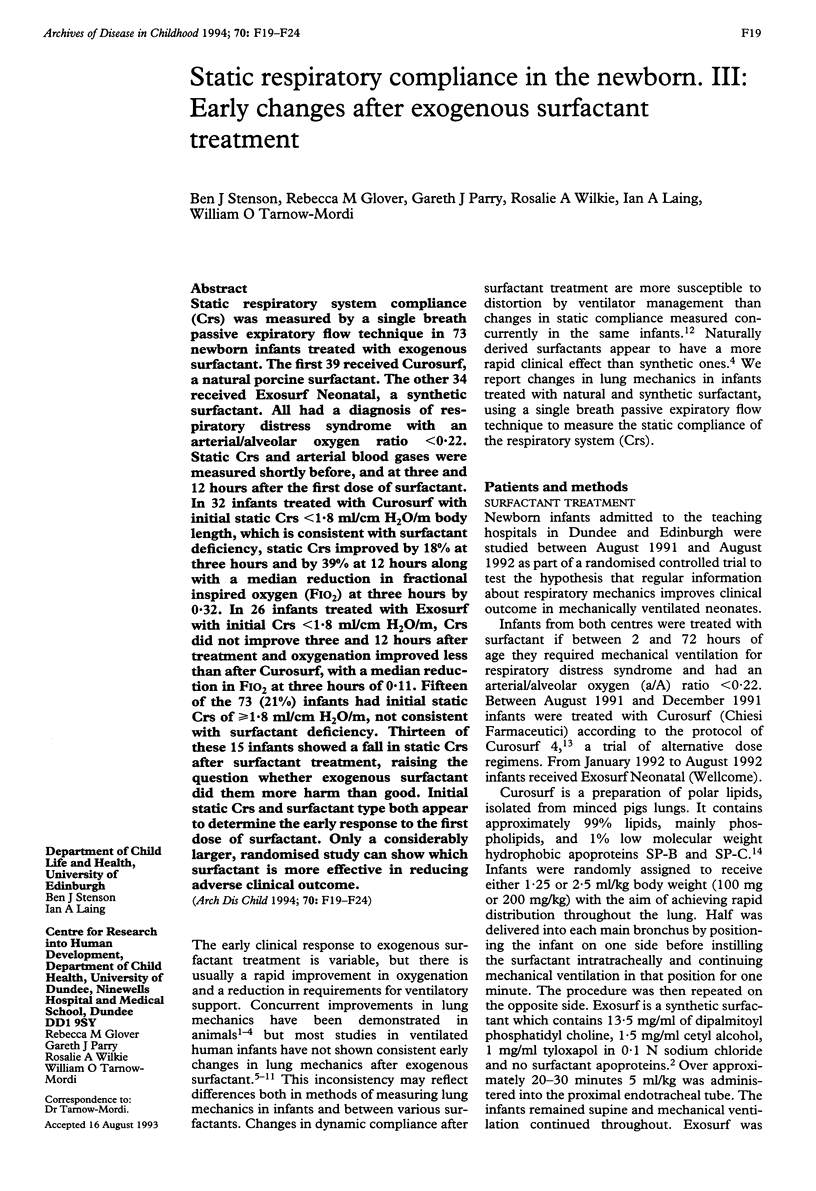
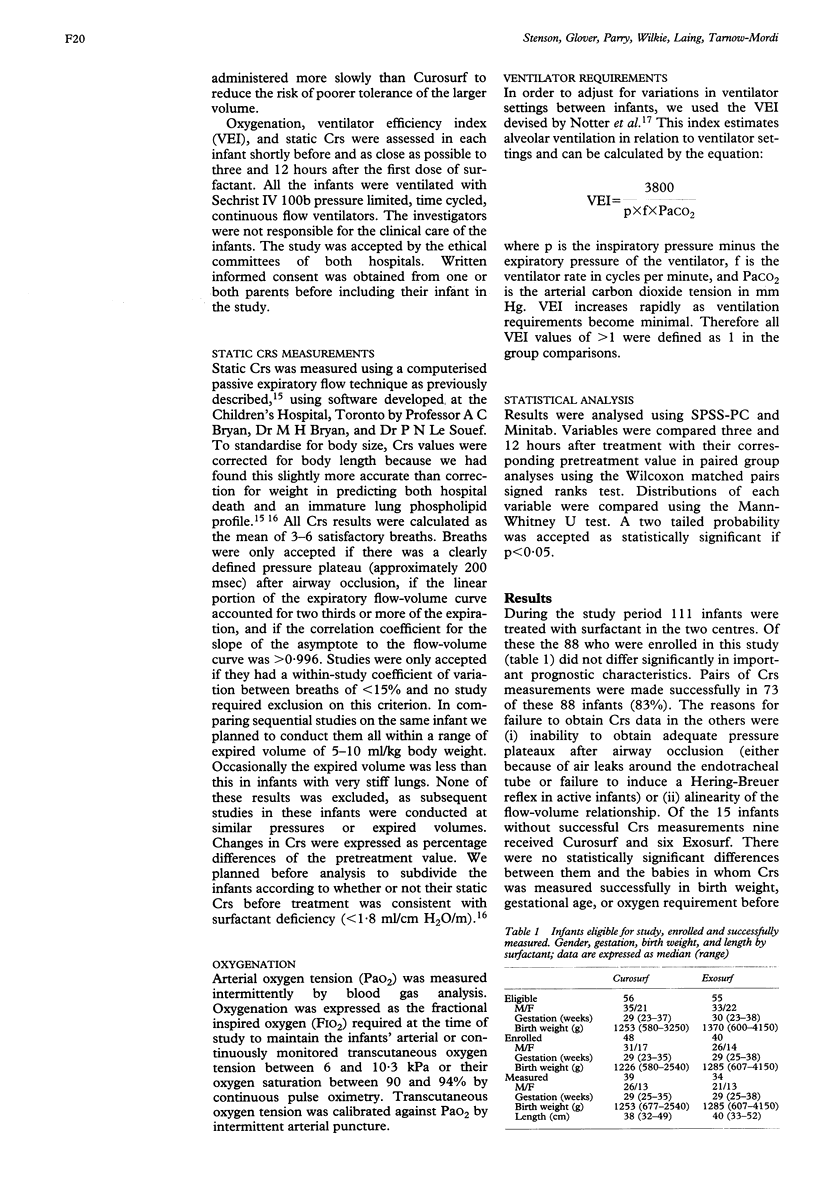
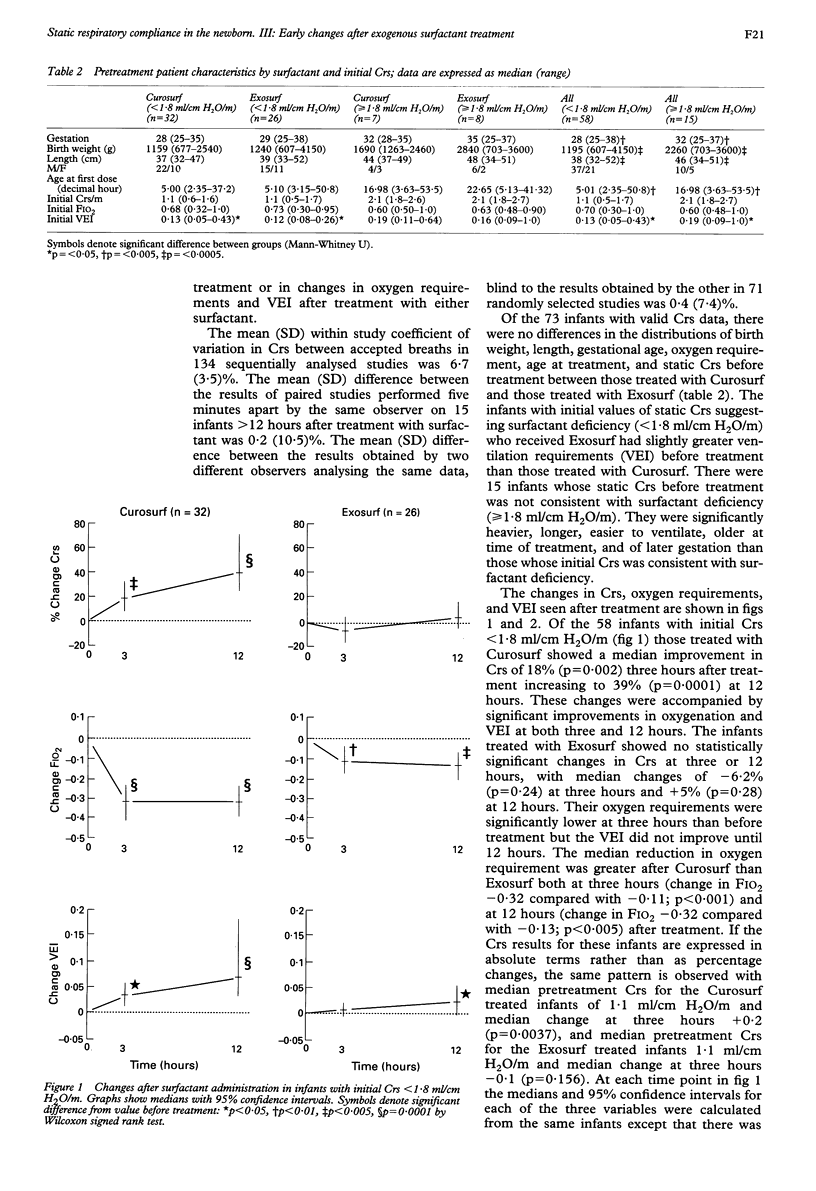
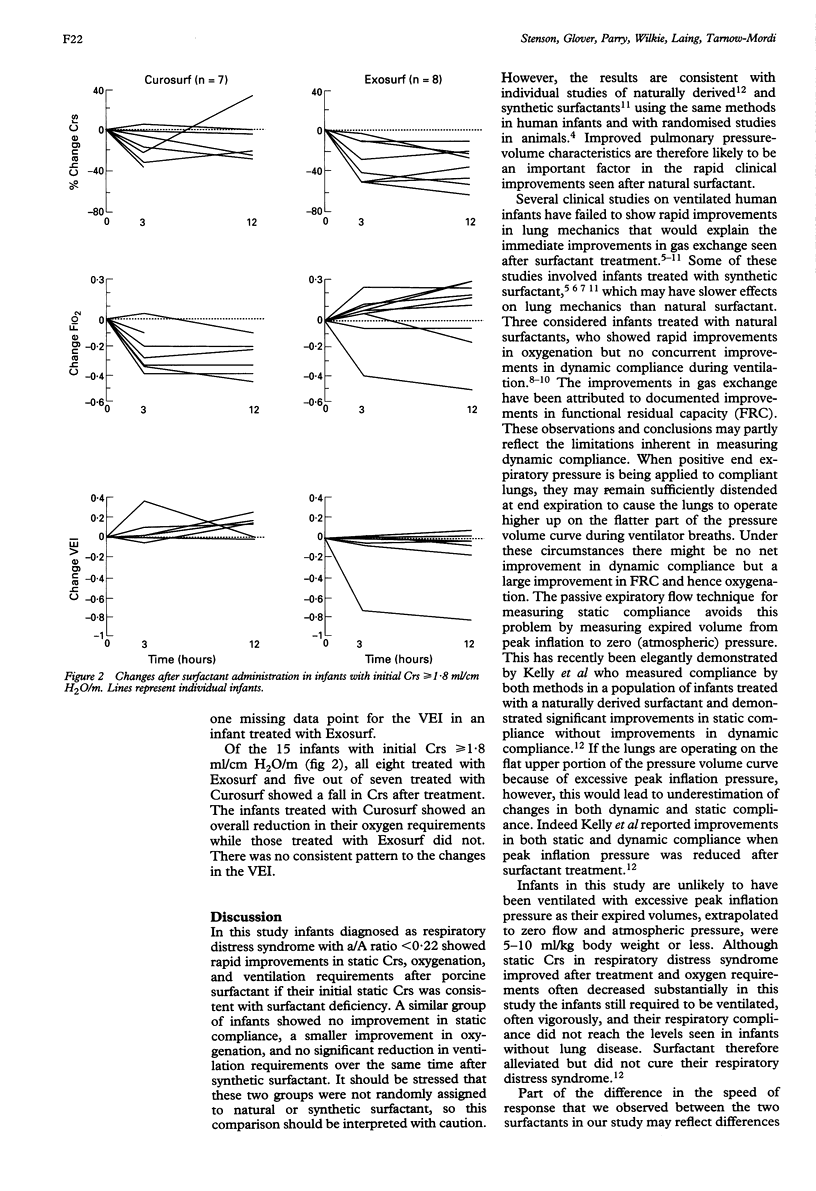
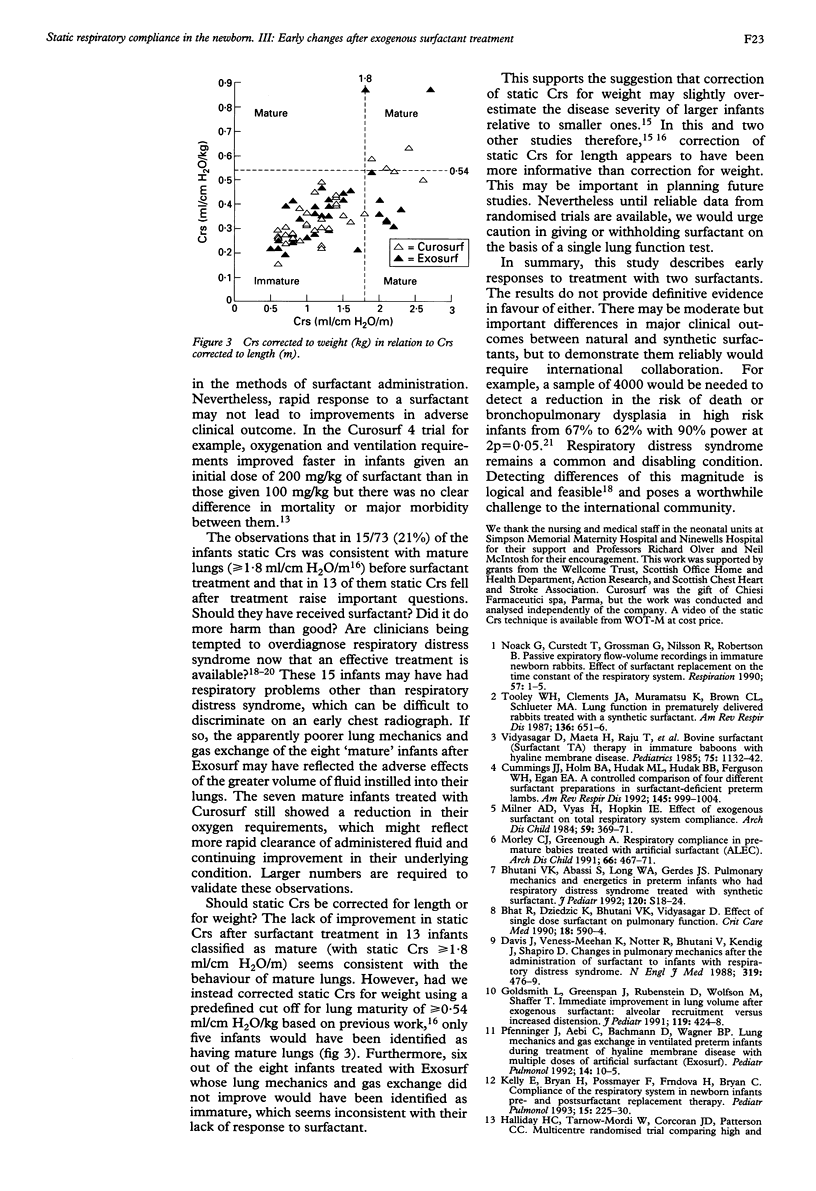
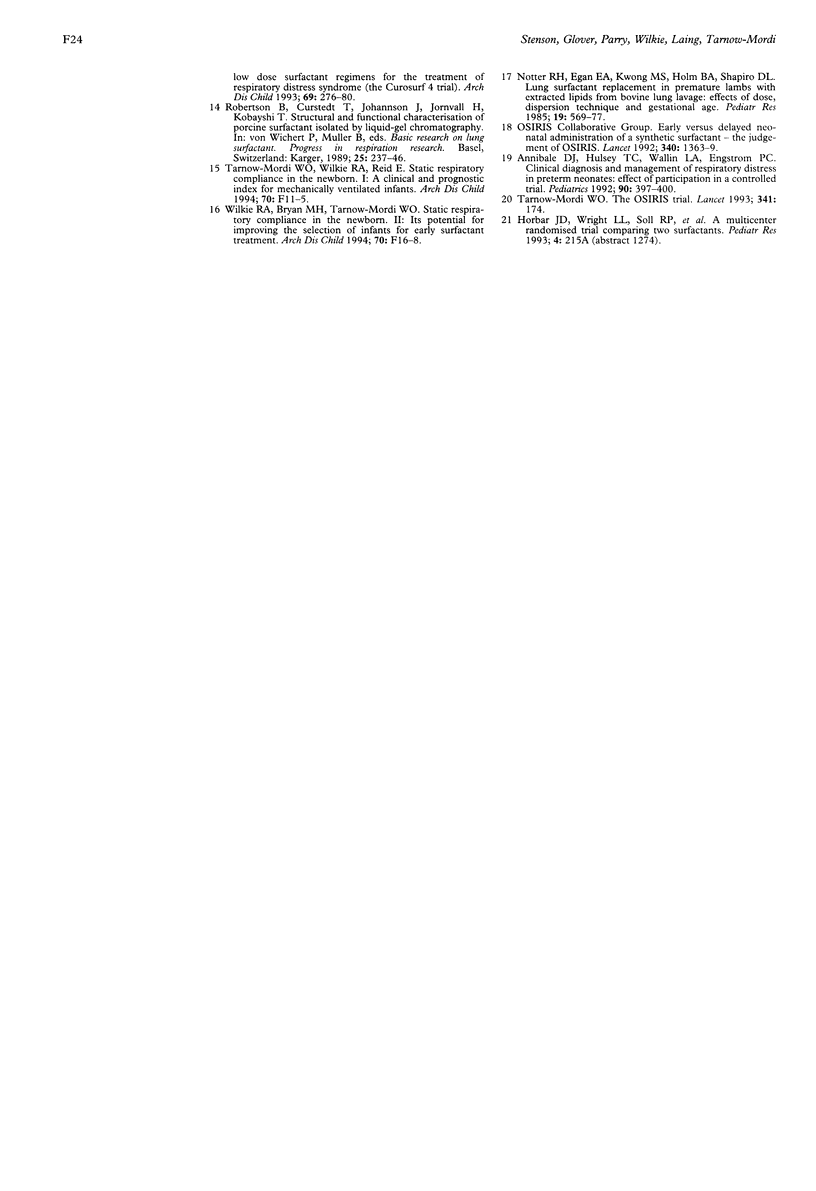
Selected References
These references are in PubMed. This may not be the complete list of references from this article.
- Annibale D. J., Hulsey T. C., Wallin L. A., Engstrom P. C. Clinical diagnosis and management of respiratory distress in preterm neonates: effect of participation in a controlled trial. Pediatrics. 1992 Sep;90(3):397–400. [PubMed] [Google Scholar]
- Bhat R., Dziedzic K., Bhutani V. K., Vidyasagar D. Effect of single dose surfactant on pulmonary function. Crit Care Med. 1990 Jun;18(6):590–595. doi: 10.1097/00003246-199006000-00002. [DOI] [PubMed] [Google Scholar]
- Cummings J. J., Holm B. A., Hudak M. L., Hudak B. B., Ferguson W. H., Egan E. A. A controlled clinical comparison of four different surfactant preparations in surfactant-deficient preterm lambs. Am Rev Respir Dis. 1992 May;145(5):999–1004. doi: 10.1164/ajrccm/145.5.999. [DOI] [PubMed] [Google Scholar]
- Davis J. M., Veness-Meehan K., Notter R. H., Bhutani V. K., Kendig J. W., Shapiro D. L. Changes in pulmonary mechanics after the administration of surfactant to infants with respiratory distress syndrome. N Engl J Med. 1988 Aug 25;319(8):476–479. doi: 10.1056/NEJM198808253190804. [DOI] [PubMed] [Google Scholar]
- Goldsmith L. S., Greenspan J. S., Rubenstein S. D., Wolfson M. R., Shaffer T. H. Immediate improvement in lung volume after exogenous surfactant: alveolar recruitment versus increased distention. J Pediatr. 1991 Sep;119(3):424–428. doi: 10.1016/s0022-3476(05)82057-8. [DOI] [PubMed] [Google Scholar]
- Halliday H. L., Tarnow-Mordi W. O., Corcoran J. D., Patterson C. C. Multicentre randomised trial comparing high and low dose surfactant regimens for the treatment of respiratory distress syndrome (the Curosurf 4 trial). Arch Dis Child. 1993 Sep;69(3 Spec No):276–280. doi: 10.1136/adc.69.3_spec_no.276. [DOI] [PMC free article] [PubMed] [Google Scholar]
- Kelly E., Bryan H., Possmayer F., Frndova H., Bryan C. Compliance of the respiratory system in newborn infants pre- and postsurfactant replacement therapy. Pediatr Pulmonol. 1993 Apr;15(4):225–230. doi: 10.1002/ppul.1950150408. [DOI] [PubMed] [Google Scholar]
- Milner A. D., Vyas H., Hopkin I. E. Effect of exogenous surfactant on total respiratory system compliance. Arch Dis Child. 1984 Apr;59(4):369–371. doi: 10.1136/adc.59.4.369. [DOI] [PMC free article] [PubMed] [Google Scholar]
- Morley C. J., Greenough A. Respiratory compliance in premature babies treated with artificial surfactant (ALEC). Arch Dis Child. 1991 Apr;66(4):467–471. doi: 10.1136/adc.66.4.467. [DOI] [PMC free article] [PubMed] [Google Scholar]
- Noack G., Curstedt T., Grossmann G., Nilsson R., Robertson B. Passive expiratory flow-volume recordings in immature newborn rabbits. Effect of surfactant replacement on the time constant of the respiratory system. Respiration. 1990;57(1):1–5. doi: 10.1159/000195811. [DOI] [PubMed] [Google Scholar]
- Notter R. H., Egan E. A., Kwong M. S., Holm B. A., Shapiro D. L. Lung surfactant replacement in premature lambs with extracted lipids from bovine lung lavage: effects of dose, dispersion technique, and gestational age. Pediatr Res. 1985 Jun;19(6):569–577. doi: 10.1203/00006450-198506000-00014. [DOI] [PubMed] [Google Scholar]
- Pfenninger J., Aebi C., Bachmann D., Wagner B. P. Lung mechanics and gas exchange in ventilated preterm infants during treatment of hyaline membrane disease with multiple doses of artificial surfactant (Exosurf) Pediatr Pulmonol. 1992 Sep;14(1):10–15. doi: 10.1002/ppul.1950140104. [DOI] [PubMed] [Google Scholar]
- Tarnow-Mordi W. OSIRIS trial. Lancet. 1993 Jan 16;341(8838):174–174. [PubMed] [Google Scholar]
- Tooley W. H., Clements J. A., Muramatsu K., Brown C. L., Schlueter M. A. Lung function in prematurely delivered rabbits treated with a synthetic surfactant. Am Rev Respir Dis. 1987 Sep;136(3):651–656. doi: 10.1164/ajrccm/136.3.651. [DOI] [PubMed] [Google Scholar]
- Vidyasagar D., Maeta H., Raju T. N., John E., Bhat R., Go M., Dahiya U., Roberson Y., Yamin A., Narula A. Bovine surfactant (surfactant TA) therapy in immature baboons with hyaline membrane disease. Pediatrics. 1985 Jun;75(6):1132–1142. [PubMed] [Google Scholar]
- Wilkie R. A., Bryan M. H., Tarnow-Mordi W. O. Static respiratory compliance in the newborn. II: Its potential for improving the selection of infants for early surfactant treatment. Arch Dis Child Fetal Neonatal Ed. 1994 Jan;70(1):F16–F18. doi: 10.1136/fn.70.1.f16. [DOI] [PMC free article] [PubMed] [Google Scholar]


